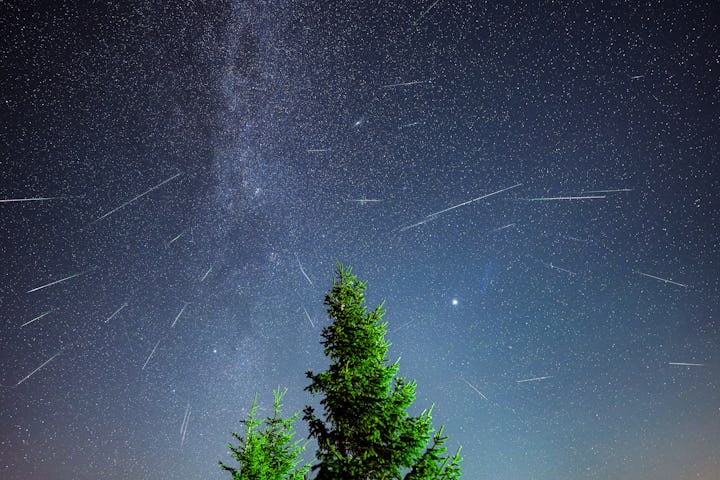One Of The Most Prolific Meteor Shower Of The Year Is Coming Soon — Start Planning Now
It’s a star-gazing marathon you won’t want to miss.

One of the most prolific meteor showers of the year, and known by experts to be perhaps the most reliably prolific, the Geminids, is just weeks away. It promises to deliver a grand finale of dazzling asteroid debris to round out a year full of spectacular stargazing. And though it would be a wintry, potentially ice-cold show depending on where you live, it’s not too late to plan to get to a dark sky location to be dazzled — kids may or may not be included.
What is the Geminids Meteor Shower?
The Geminids Meteor Shower is one of a kind. It’s a favorite among star-watchers because year after year, it’s reliably one of the most active meteor showers. At its peak, you can expect to see 150 meteors per hour, according to the American Meteor Society.
Not only are there a lot of meteors passing through the sky during the Geminids, but they also move very slowly and shine a very bright yellow, making them vibrant and easy to spot in the sky, per The Farmer’s Almanac.
The meteor shower originates from the fragments of an asteroid known as 3200 Phaethon — which is why this shower differs from the others throughout the year. Most meteor showers come from the debris from a comet, but the Geminids result from debris from an asteroid.
And it’s an oldie: The Geminids is a nearly 200-year-old meteor shower. The first recorded sighting of the Geminids was in 1833, Space reports, “from a riverboat on the Mississippi River.” The mere fact that people alive almost 200 years ago got to see what we’ll see in just a few weeks is mind-blowing — like a piece of astronomical history.
When will the 2023 Geminids Meteor Shower peak?
The 2023 Geminids Meteor Shower is estimated to peak on the nights of December 13 and 14, depending on your time zone, though it is active in our skies from November 19 to December 24.
What are the best conditions to watch the 2023 Geminids Meteor Shower?
According to the experts, the best condition to watch any meteor shower, including the Geminids Meteor Shower, is to find a dark sky that’s not lit by city lights or a bright moon. You can do that by simply driving away from your city if you live in one, counting your lucky stars (literally) if you live rurally, or by visiting a dark sky park.
You don’t need any special equipment to see the shower zip through the sky. It’s likely to be cold out though, so you’ll want to make sure you (and the kids, if you dare keep them up that late) are bundled up well and maybe have some sleeping bags to lay on the ground so you can look up. If you’re in a more light-polluted area, be sure to give your eyes time to adjust to the darkness of the sky; it may take a while for you and the family to adjust so you can see the starry show.
The show can start as early as 9 p.m. and peak in the early morning hours of 2 a.m. It will peak in the days after December’s new moon, so there will be dark skies to provide the best possible viewing situation.
Which dark sky parks will have the best view of the Geminids Meteor Shower?
Light pollution is the biggest obstacle in seeing any nighttime show — from meteor showers to the Big Dipper. Although simply driving away from your urban area will help you see this prolific shower, you can do even better. Heading to an area that’s considered a “dark sky park” will offer you and your family the best view of this spectacular meteor shower.
The International Dark-Sky Association (IDA) tracks and records the locations across the country they consider “starry sky parks,” or locations that are unimpeded by light pollution and, thus, perfect for viewing a meteor shower.
According to the IDA, more than half of U.S. states have at least one location that has been certified as a “dark sky park,” including several national parks. Here are a few to consider if you want to make a real trip out of this prolific meteor shower show:
- Black Canyon of the Gunnison National Park in Colorado
- Cape Lookout National Seashore in North Carolina
- Cherry Springs State Park in Pennsylvania
- City of Rocks National Preserve in Idaho
- Death Valley National Park in California
- Geauga Observatory Park in Ohio
- Grand Canyon National Park in Arizona
For a full list of IDA-certified National Parks and other designated “dark sky parks” to help plan your star gazing event, visit the IDA’s website.